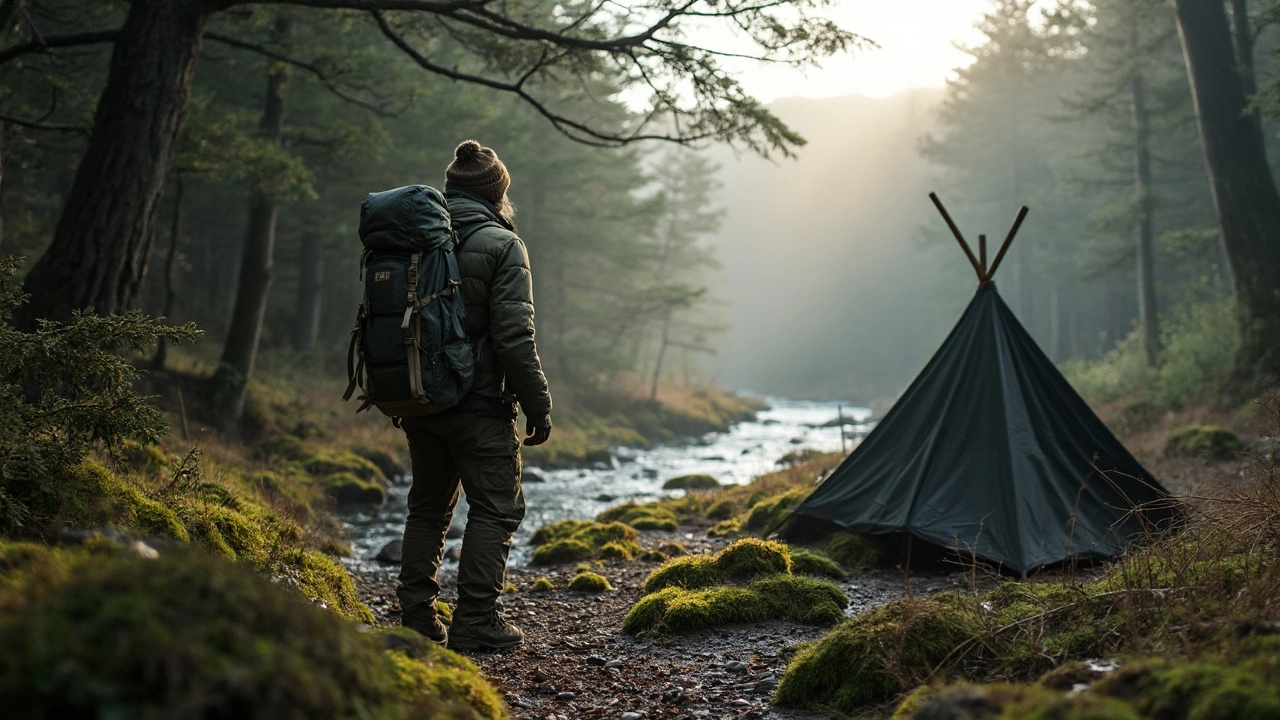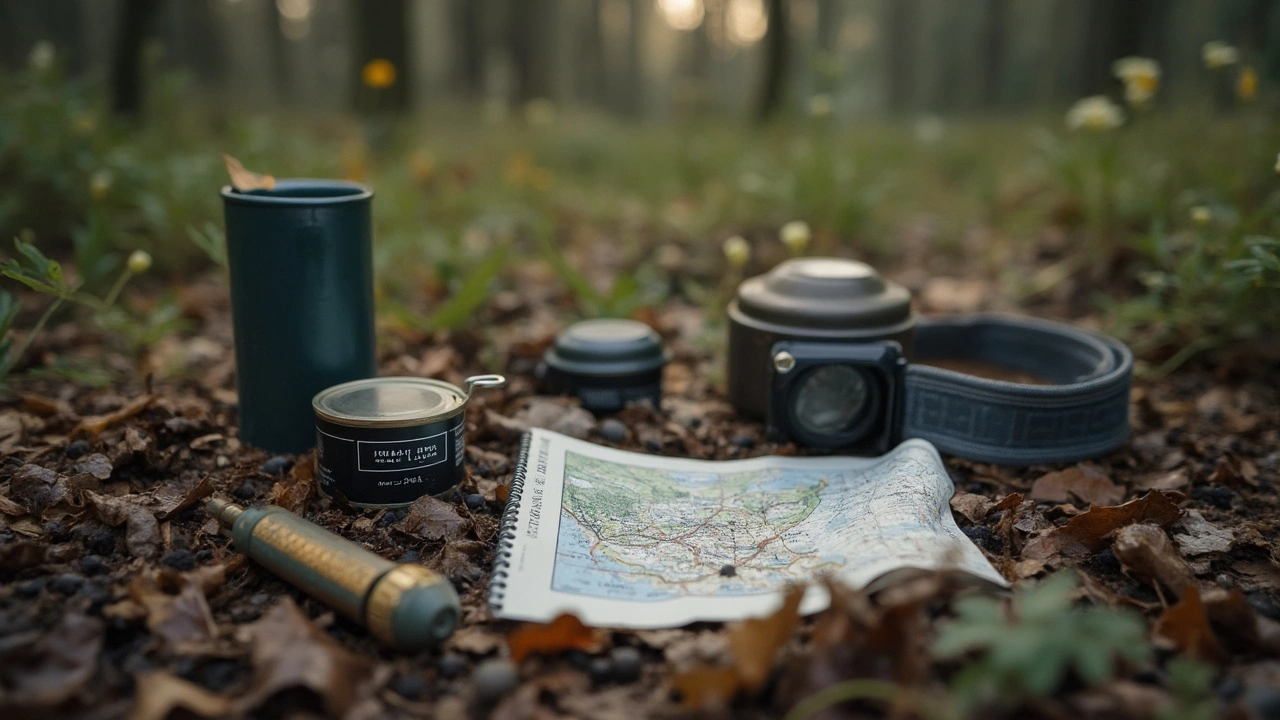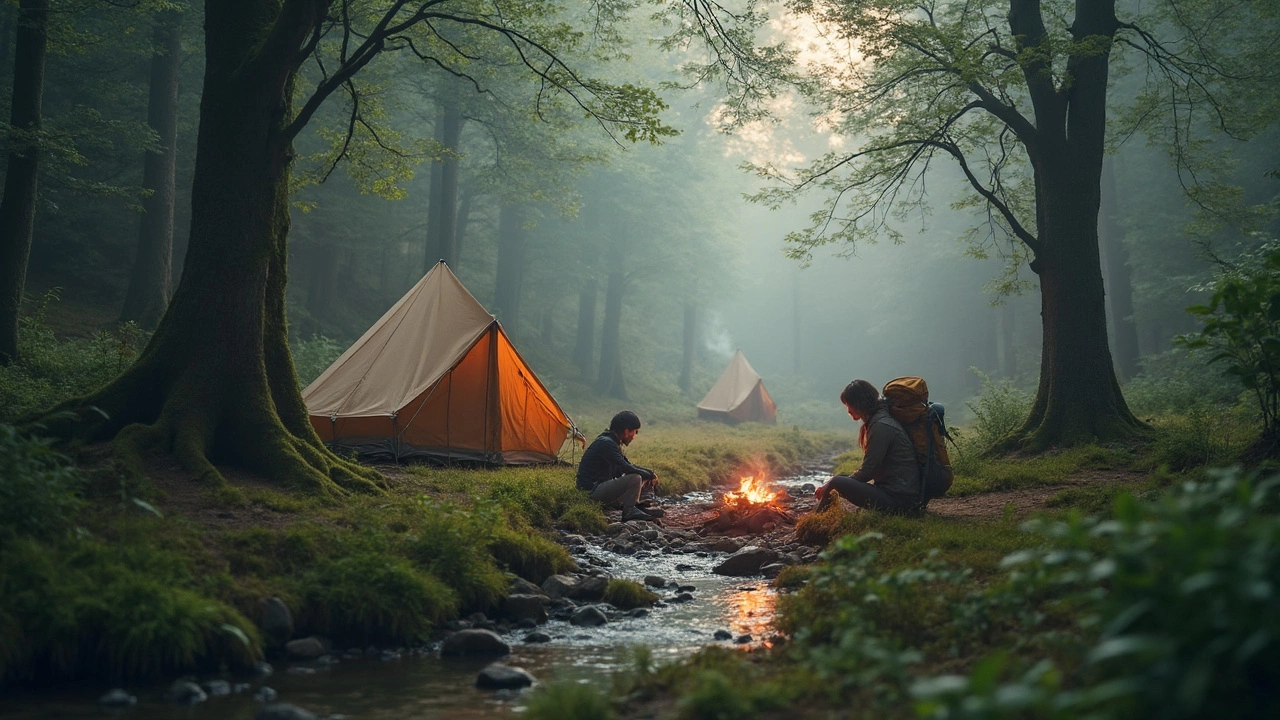Primitive camping hits differently than pitching a tent a few feet from your car. When folks talk about “primitive” in the camping world, they mean stripping away all the modern extras—goodbye flush toilets, hot showers, and plug-ins. It’s just you, your gear, and the forest floor. No frills, no distractions.
This style of camping calls for some real planning. Expect to bring everything you need, right down to water and a shovel for your own bathroom needs. There’s usually no staff, no one to sell you forgotten coffee or fix an issue. But you get peace most RV campers only dream about. Sound tough? It can be, but the payoff is freedom, solitude, and some of the best back-to-basics moments you’ll find outdoors.
- Defining Primitive Camping
- What To Expect At A Primitive Campsite
- Essential Gear You Need
- Pros, Cons, and Common Surprises
- Tips To Succeed Like A Pro
Defining Primitive Camping
When people mention primitive camping, they're talking about a style that ditches all the usual campground perks. No bathrooms, showers, electric hookups, not even a water spigot. It’s just the basics: a cleared spot for your tent, maybe a fire ring if you’re lucky, and a whole lot of forest.
The real focus is self-sufficiency. In most forest campsites that offer primitive options, you won’t find a store or ranger office. You’ll probably have to pack in your own food, water, and even your trash. Primitive sites are often hike-in or paddle-in, which keeps crowds low and gives you space to breathe. These campsites usually sit further away from roads and developed areas, which means more wildlife and less noise.
- No amenities: Forget about flush toilets, picnic tables, or power outlets. If a site advertises "vault toilets" nearby, consider it a bonus.
- Remote settings: These spots are commonly deeper in the woods. Access might require a long drive on a dirt road, a hike, or a paddle across a lake.
- DIY everything: You’ll handle your own water treatment, food storage, and waste. Most permits (if you need one) are issued online or at a ranger station before you go.
One American Forest Service report found that over 40% of national forest campsites are considered primitive, so you’re not alone in wanting to get off-grid. Plenty of people chase this experience, hoping to unplug and reconnect with the wild the way campers did before all the gadgets came along.
What To Expect At A Primitive Campsite
So you’re heading out for some primitive camping in the woods. What’s waiting for you out there? Honestly, not much, and that’s the whole point. Most forest campsites labeled as primitive are just clearings—space to set up your tent and maybe a basic fire ring. Water? You’ll have to bring your own or be ready to treat or filter what you find in nearby streams or lakes. Forget about bathrooms, running water, or picnic tables.
Here’s what most people find when they get to a real primitive campsite:
- No amenities: No toilets, showers, or garbage bins. Be ready to pack out everything you bring.
- Natural terrain: Expect uneven ground, rocks, maybe dense tree cover. Site “improvements” are rare—a flat patch of dirt is considered lucky.
- No electricity or cell signal: It’s common for there to be no lighting, no plugs, and often not even cell service.
- Wildlife: These spots can attract animals because they’re less disturbed by people. It’s crucial to store food properly and keep your site clean.
Want some numbers? About 60% of National Forest camping spots are considered primitive, with less than 10% offering year-round access to amenities. A few spots might have a posted sign, but don’t count on clear markers—or neighbors to ask for help.
As for crowds, most primitive forest campsites stay a lot quieter than regular car camping spots. You’ll get more privacy and room to explore, but you’re really on your own. That’s why knowing basic survival stuff—like purifying water, building fires safely, and handling emergencies—isn’t optional, it’s expected.

Essential Gear You Need
When it comes to primitive camping, you can’t just grab your favorite blanket and hope for the best. These trips demand real prep. Here’s what makes it to every seasoned camper’s must-have list for getting by at forest campsites where there’s no backup.
- Reliable Shelter: Bring a solid tent—one that can handle sudden downpours and wind. Don’t forget a sturdy ground tarp to keep out ground moisture.
- Sleeping Gear: A warm sleeping bag is essential, even in the summer. Night temps drop fast in the woods. Add an inflatable pad or foam mat for extra comfort and insulation.
- Water Supplies: Since there’s usually no running water, a big jug or several bottles are your lifeline. Water filters or purifying tablets are non-negotiable unless you’re hauling days’ worth of water on your back.
- Cooking and Food: Forget luxury grills—it’s all about lightweight stoves or a pot for campfires (where allowed). Stick to easy-to-carry food like pasta, canned beans, or dehydrated meals.
- Light Sources: Headlamps, lanterns, or even several backup flashlights are crucial. Campsites without electricity get pitch black after sundown.
- First Aid Kit: Forests have brambles, bugs, and sometimes surprise animal encounters. Stock your kit with basics: bandages, tweezers, antiseptic wipes, allergy meds, and painkillers.
- Navigation Tools: Forget relying on cell service. Bring a detailed paper map, a compass, and maybe a GPS if you’re exploring deep forest areas.
- Waste Management: A trowel to dig a cat hole for bathroom needs, plus extra zip bags for packing out toilet paper and trash. Leave no trace means exactly that.
- Weather Protection: Rain jackets and layered clothing go a long way. Check the forecast, but always expect a curveball in the woods.
Here’s a quick look at the basics seasoned campers won’t leave behind:
| Category | Essential Item Example |
|---|---|
| Shelter | Weather-resistant tent |
| Sleeping | Insulated sleeping bag |
| Water | 4L+ per day, filter or tabs |
| Cooking | Portable stove |
| Lighting | LED headlamp |
| First Aid | Comprehensive first aid kit |
| Navigation | Topo map and compass |
| Weather | Rain shell & base layers |
Don’t worry about the fancy extras—just focus on these basics. The simpler you can pack, the better you’ll move and the safer you’ll be out there. Keeping it minimal lets you soak up everything primitive camping and forest campsites have to offer—without the stress of missing something vital.
Pros, Cons, and Common Surprises
Let’s be real—primitive camping isn’t for everyone, but there are some solid upsides, along with legit headaches and a few "wait, what?" moments. Here’s how it usually shakes out at forest campsites.
- Pros: If you’re after peace, this is where to find it. Primitive forest campsites are usually way less crowded, giving you elbow room and those perfect "no one else around" sunrises. It’s cheap (sometimes free), and you really get to disconnect—no cell towers, no noisy generators, just the sound of wind and birds. You’ll pick up real outdoor skills, too, because you have to.
- Cons: You have to haul in your water and pack out your trash. Forget about flushing anything. If the weather turns, shelter is totally on you. Wild animals? Also on you to manage. Sometimes sites aren’t marked, and you could spend ages bushwhacking around trying to find your spot. Everything takes longer, from cooking to hanging your food away from raccoons.
A study by the National Park Service showed that 68% of problems at primitive camping sites came from folks underestimating just how basic things really are—mostly running out of water or not being ready for surprise rain. Here’s a snapshot of some common surprises and how often they trip up campers:
| Surprise | Percent of Campers Caught Off Guard |
|---|---|
| No potable water | 54% |
| No marked trails | 35% |
| Wildlife encounters | 29% |
| No cell signal | 85% |
As Mike O’Brien, a Leave No Trace educator, puts it:
“Primitive camping tests your ability to stay comfortable and safe with as little help as possible. It’s a reset for the senses and a wake-up call for outdoor skills you might’ve forgotten you had.”
Primitive camping is a wake-up if you’re used to buttoned-up, manicured campgrounds. It’s raw, sometimes frustrating, but hands-down satisfying when you finally nail it. If you roll with surprises, the forest is all yours.

Tips To Succeed Like A Pro
Nailing primitive camping is all about planning, know-how, and keeping things simple but smart. Here's how to actually enjoy the challenge instead of just surviving it.
- Water is priority one. Always know where your water is coming from. Bring extra or packing a solid water filter is a must. Local streams and lakes can be loaded with bacteria—even in the wild.
- Food needs to keep. Skip stuff that spoils fast. Think dehydrated meals, nut butter, and instant oats. Pack in more than you think you'll need. Calorie-dense snacks help fuel hikes and keep you moving in rough spots.
- Fire skills matter. Primitive sites rarely give you a fire ring or cut wood. Learn how to safely build a fire from scratch and know your local rules. Always drown your fire before leaving or sleeping.
- Trash goes with you. There won’t be any bins or dumpsters. Bring strong trash bags and pack everything back out so nature stays clean for the next round. Stash your food and trash away from your tent—bears have a keen sense of smell.
- First aid isn't optional. No bathrooms also means no medical help for miles. Pack a legit first aid kit, including tweezers, painkillers, and some medical tape you can trust for bigger scrapes.
- Navigation tools save you. Phone signal? Not gonna happen most the time. Know how to use a compass and map, or pack a GPS device you know works offline. Download offline maps before leaving home.
- Keep your camp light and tight. Aim for lightweight tents, sleeping bags, and minimal gear you know how to use. The more you pack, the heavier your hike in (and out!) will be.
Want something straightforward? Check this quick comparison of must-have items for primitive camping versus car camping:
| Gear | Primitive Camping | Car Camping |
|---|---|---|
| Water | Purification system & backup | Gallons from home or local tap |
| Cooking | Backpacking stove, fuel tablets | Full-size grill or stove |
| Toilet | Trowel, bags for pack-out | Flush toilets on site |
| Lighting | Headlamp, extra batteries | Lanterns, electric hookups |
Master these basics and you'll handle primitive camping like a seasoned pro. The first trip might throw you a few curveballs, but that’s all part of the fun. The wild doesn’t wait for anyone, so the more you know before you go, the better your time (and your memories) will be.
